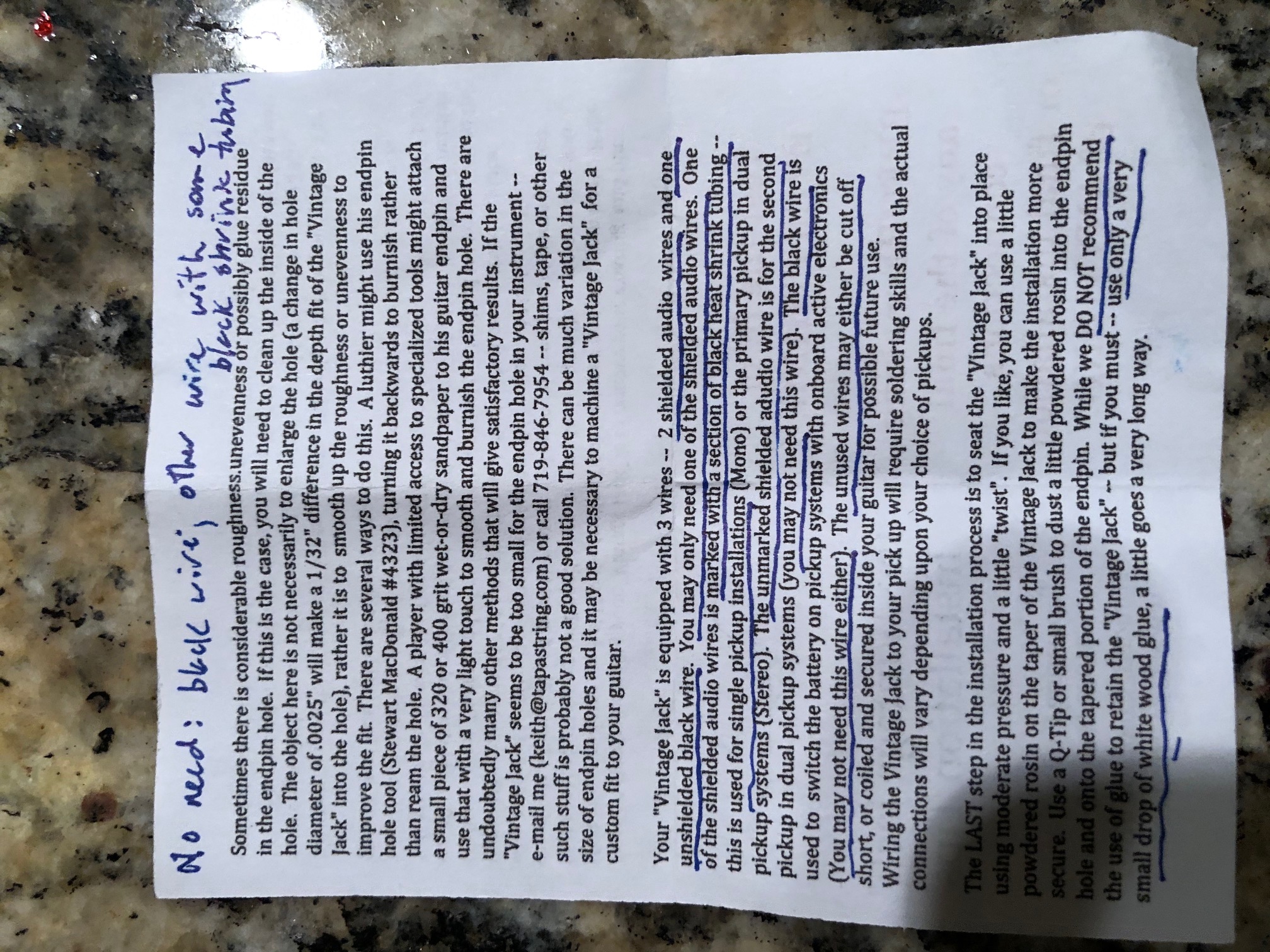
-
There is an old thread on forum of these jacks. I am not one who likes to drill holes in tailpieces on vintage guitars to get a jack for a floating pickup. You normally have to at least open the tailpiece hole to get a regular endpin jack. Does anyone use one of these?
Tapastring Guitar Care Products | The "Vintage Jack" | End Pin Jack No Drilling Required
To me this would require zero drilling and simply pull end pin and go with it. The money is not a issue and really these days I don't think a bad deal. If not other options on pickguard are ok but less than going through the tailpiece.
-
-
Not fond, for various ergonomic reasons, of the under-the-pickguard jack on my '69 JS, I had Matt of 30th Street Guitars install the Tapastring vintage jack in place of the endpin with the same minimally invasive intention. I believe he did have to enlarge the endpin hole ever-so-slightly. In the years since, I have remained happy with the result (utility, performance etc.).


-
I have one on my Harmony Brilliant Cutaway. Easy installation, and required no drilling whatsoever.
-
I remember these having a bad rap, but no recollection why. 1/8" jack, right? That might make people grouchy.
-
Eddie Diehl installed one on my 1937 D'Angelico Style A. Works like a charm.
-
Just keep a few of these around at all times. Especially when playing out.
Access to this page has been denied.
-
Looks like an elegant solution.
IF I used my GJS as working mans tool, I would definitely consider a tapastring.
However, if the existing hole has to get reamed out by even the slightest amount, I'd rather just put a 1/4" end pin jack in and be done with it.
JD
-
I put one in my 1944 L7. No drilling, no problem. I have to use this little cable to convert from 3.5mm to a standard 1/4 inch guitar cable. Minor nuisance. I keep a spare in the case because it's easy (for me) to forget.
I took photos of the installation instructions when I was trying to puzzle out how to wire a reissue DeArmond pickup. Maybe this information will be helpful to you.



-
Not all tailpieces are the same of course, but when I put a standard 1/4” endpin jack in the 1966 GJS I used to own no alteration of the tailpiece was needed.
Sent from my iPhone using Tapatalk
-
Thanks for all the responses it helps. I have a number of 1/8 inch jack guitar chords with the standard 1/4 output to amp end. This is because my Barkers guitars all come with the Dearmond 1100 and the mini pot enclosure that is mounted on the pickguard. This is where the mini 1/8 male jack is used. Granted it is not as secure as the jack in the tailpiece but it actually is quick stable. I even have that on the 49 D'angelico because it has a Dearmond 1100. When I gig with the Barker I put the chords on a keeper that attaches to the endpin. That is the "in case" the chord gets pulled. These days I don't gig too much so not a problem.




 Reply With Quote
Reply With Quote







Autumn Leaves (Fingerstyle Chord Melody)
Yesterday, 11:56 PM in Improvisation